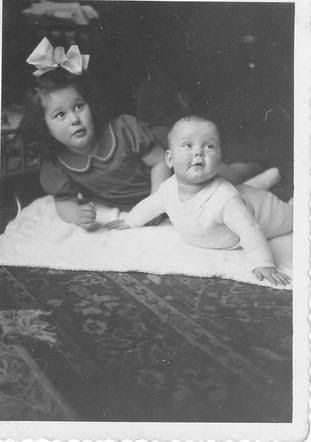Refugees from Amsterdam
In 1943, the Jewish Leijdesdorff-Hoek family fled from Amsterdam and went into hiding in Ede. The family comprised the parents Isaäc and Sarina and their two daughters Hanneke and Jenneke, aged 4 and 6 respectively. The young married couple Gerrit van den Berg and Co Welbedacht took in the two young girls. They lived safely for three months at the couple’s home on Paasbergerweg, played outside and attended school.
The parents went into hiding at the house of haulier Karssenberg on Molenstraat, alongside the Ed-Amersfoort railway line. After a while it seemed that the Sicherheitsdienst (SD: the SS intelligence agency) was on the family’s trail. Co returned the girls to Amsterdam where they were looked after by acquaintances.
Arrests
On the evening of 9 July 1943, a car stopped at the detached house on Molenstraat and five Germans got out. The operation was led by the local German military commander, Fregattenkapitän (naval commander) Hans Kersten of the Kriegsmarine (German navy). After a rough search of the house, Karssenberg, the Jewish pair and a third person in hiding were arrested. They were forced to walk to the office of the local military commander on Klinkenbergerweg and were then transferred to the barracks.
Tragic transport
Karssenberg spent 7½ months in Vught concentration camp and was then released. On 10 July, the three Jewish prisoners were transported to Amsterdam and later to Westerbork Camp. From there they were sent to Sobibor extermination camp, where they were gassed on 23 July 1943.
A young Jewish girl – who was also in hiding in Karssenberg’s house – managed to remain hidden and was taken to safety by the resistance once the Germans had left. Both the Leijdesdorff girls survived the war.
The commemorative stone in the pavement in front of you is a memorial to the murdered Jewish pair who were in hiding here.
Do you want to experience this story on its original location? Visit the information panel on the Molenstraat 140, in fron of the ING bank.
